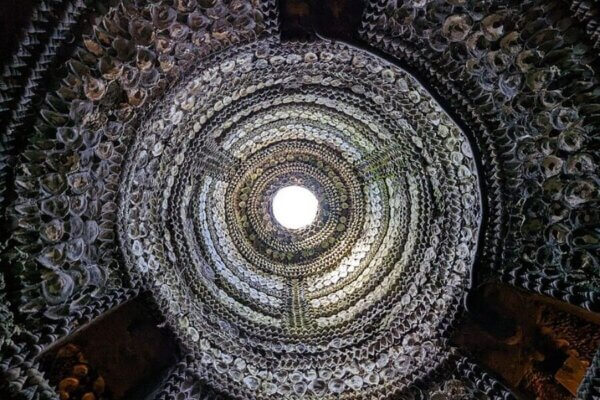Products are selected by our editors, we may earn commission from links on this page.
History has a way of sneaking up on us, dropping jaws and making us question everything we thought we knew. From legendary sculptures that look like crochet to sunlit mausoleums, the past isn’t just something you read about—it’s a blockbuster of mind-blowing moments. So, strap in as we sift through time’s treasure chest for a delightful journey into the weird, wild, and wonderful.
The Marble Crochet Masterpiece

Greek artist Argiris Rallias fooled us all, sculpting marble so delicate it looks like lace. His talent blurs the line between hard stone and soft textiles.
Visitors often marvel at the intricate craftsmanship, swearing it’s fabric until they touch it. Rallias redefines the limits of marble carving, showing what precision can achieve.
This masterpiece reflects ancient Greek artistry meeting modern illusion, and we’re left pondering how many spoons dipped in plaster it takes to practice this skill.
A Sinkhole Ecosystem in China

In Xuanen County, Hubei, a vast sinkhole houses a secluded ecosystem, complete with ancient trees, plants, and critters straight out of a sci-fi novel.
The hole, over 290 meters deep, thrives in a humid microclimate, making it an untouched sanctuary for species we might not even know exist.
It’s Jules Verne meets Lovecraft down there, and no one’s sending drones anytime soon—it’s a natural fortress of biodiversity.
Turkey’s Roman Mosaic Wonderland

Unearthed during a hotel construction in Antakya, this colossal Roman mosaic showcases intricate designs, rippled by centuries of earthquakes.
The mosaic’s wave-like effect is nature’s contribution to art, turning a floor into a surreal, textured masterpiece that makes modern tiles look basic.
Preserved for centuries, it tells the story of Roman engineering’s intersection with geological drama, a combo no ancient Instagram could capture.
Tiny Treasures From Turkmenistan

At Gonur Depe, archaeologists unearthed a tiny golden ram and a stone lion—artifacts as small as they are astonishing.
These miniatures hail from 2400 to 1600 BC, showcasing Oxus civilization’s precision and artistic flair in creating pint-sized symbols of their world.
They’re so small a fingertip becomes the scale bar, proving that sometimes, the best things really do come in small packages.
Star Wars’ Matte Magic

Before CGI, the Star Wars crew relied on matte paintings to craft immersive worlds. The trilogy’s realistic backdrops came from brushstrokes, not bytes.
Artists transformed film sets into galaxies far, far away, proving that the force behind great cinema often lies in old-school methods.
In a world obsessed with digital, these painted landscapes remind us that sometimes, imagination trumps technology.
The Heart of Light Mausoleum

Every summer solstice, a beam of light pierces a mausoleum in Brussels, forming a heart-shaped glow that hovers over a mourner’s hand.
This 1920 structure, seemingly ordinary, turns magical as sunlight transforms it into a poetic display of love and loss.
For 15 fleeting minutes, the heart of light reminds visitors that some designs are meant to shine once a year—and they do.
Pamukkale: Turkey’s Cotton Castle

Pamukkale’s white terraces aren’t snow—they’re calcium carbonate, deposited by hot springs over millennia. This natural wonder has attracted visitors since ancient Greek times.
The shimmering pools were believed to have healing powers, leading to the nearby city of Hierapolis, a spa-town hybrid for the ancient world’s elite.
Now a UNESCO World Heritage site, Pamukkale’s terraces shine brighter after bans on bathing restored their pristine beauty.
Redwood Giants of California

A 1950s photo of a woman standing beside a redwood tree shows just how tiny humans are compared to these colossal natural skyscrapers.
These ancient trees can live over 2,000 years and reach heights of 350 feet, creating ecosystems from the canopy to the forest floor.
Redwoods remind us of resilience, beauty, and the importance of preserving nature’s enduring treasures for future generations.
The Oldest Honey Hunt

Mesolithic cave paintings in Spain, dated 8,000–10,000 years ago, depict humans scaling cliffs to harvest wild honeycombs from buzzing bees.
The artwork showcases humanity’s sweet tooth long before modern beekeeping, celebrating our ancient ancestors’ bravery and innovation.
Before jars and labels, honey hunters risked stings for the golden nectar, a testament to the lengths we go for a sugar rush.
Prehistoric Fossils in Australia

Jimbacrinus crinoid fossils from Western Australia offer a glimpse into life 250 million years ago, preserved beautifully despite Earth’s mass extinctions.
These ancient sea creatures thrived before the Permian extinction wiped out 90% of marine species, a sobering reminder of Earth’s fragility.
Their intricate, feathery design is nature’s artistry at its best, and they’re a reminder that even extinction leaves a lasting legacy.
The Lion-Man of Germany
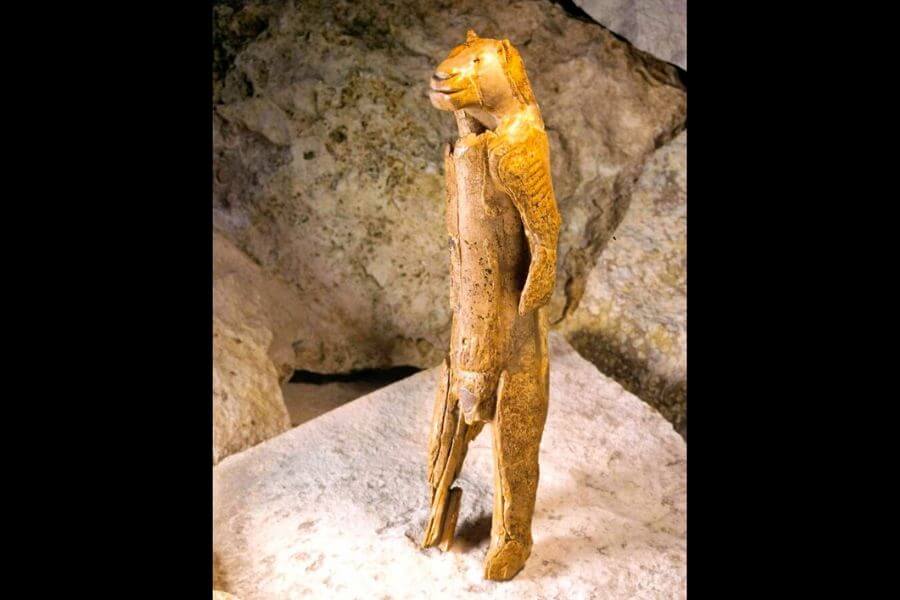
Carved from mammoth ivory 38,000 years ago, the Lion-Man sculpture merges human and animal forms in the earliest known figurative art.
Its creation predates writing, showcasing humanity’s imaginative leaps and our drive to blend reality with the surreal.
This enigmatic artifact raises questions about symbolism, belief, and creativity among the earliest humans to walk the Earth.
Sir David and a Dinosaur

David Attenborough posed with a massive Titanosaur thigh bone, discovered on a farm in Argentina, highlighting the size of this 70-ton dinosaur.
The 2013 find included over 220 bones, revealing a creature as long as four buses and offering insights into life 100 million years ago.
Attenborough, as always, makes history cooler, turning fossils into fascinating reminders of Earth’s giant past.
Whale Skeletons in Egypt

Wadi Al Hitan, Egypt’s Valley of the Whales, boasts 37-million-year-old fossils of ancient cetaceans, illuminating whale evolution from land to sea.
This UNESCO site preserves these skeletal treasures, surrounded by sands that once held prehistoric oceans teeming with life.
The museum at Wadi Al Hitan educates visitors on these remarkable finds, proving that deserts can hold the key to marine history.
Sahara’s Ancient Giraffes
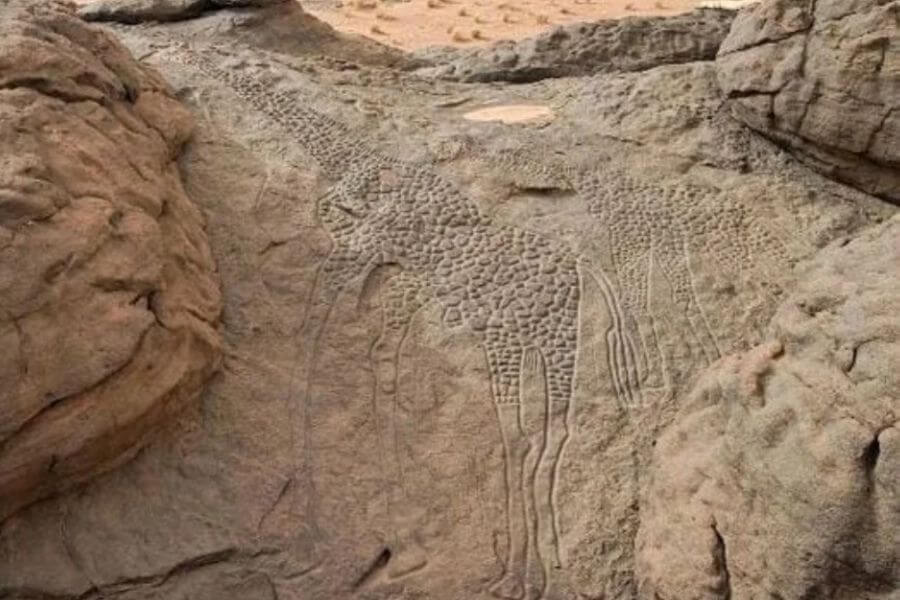
Over 9,000 years ago, Niger’s Aïr Mountains hosted the Dabous carvings: life-sized giraffes etched into rock by ancient artists.
These carvings reflect a thriving Sahara, full of life and human-animal connections long before it became a vast desert.
Today, these prehistoric artworks remind us of the Sahara’s lost vibrancy and humanity’s enduring bond with nature.
Unburying Easter Island’s Moai

Easter Island’s iconic Moai statues are more than heads—excavations revealed full bodies buried beneath the surface, sparking fresh fascination.
Carved between 1250 and 1500 AD, these statues represent ancestors and the ingenuity of the Rapa Nui people.
The mystery of their construction and placement remains unsolved, proving the island’s ancient society was as resourceful as it was remote.
Viking Ice Skates

Dating to the 10th century AD, Viking ice skates made from horse bone and leather show their knack for both survival and innovation.
These skates weren’t just practical; they were a glimpse into winter sports before helmets and zambonis were a thing.
Their design is surprisingly familiar, proving that even a millennium ago, people knew how to glide into history.
Arizona’s Petrified Forest

This national park boasts fossilized trees over 225 million years old, their vibrant hues a testament to nature’s slow, transformative artistry.
Once lush conifers in a river ecosystem, these trees became stone after volcanic ash buried them, replacing organic material with minerals.
Walking among these colorful fossils feels like stepping into the Triassic era, where forests turned to jewels under the pressure of time.
The London Knocker-Upper

Mary Smith earned sixpence per client in the early 20th century, waking people by tapping windows with a pea shooter before alarm clocks.
Her peculiar profession highlights a time when technology hadn’t yet replaced quirky, human ingenuity in daily life.
Questions like “Who woke Mary Smith?” remain unanswered, adding layers of charm to this historical oddity.
Ancient Plumbing in China

4,000-year-old ceramic water pipes discovered at Pingliangtai in China prove Neolithic engineers were skilled at managing water flow.
These pipes protected settlements from flooding, showcasing early urban planning long before modern infrastructure.
Still in use in some regions, these ancient systems bridge the past and present, revealing humanity’s long relationship with water management.
The Hittite Green Stone

A serpentinite relic in Hattusa’s temple complex, dating to 1200 BC, intrigues historians with its mysterious purpose and vibrant hue.
Theories about its significance range from religious ceremonies to decorative symbolism, with its exact use remaining elusive.
This enigmatic artifact reminds us that ancient cultures held secrets we may never fully unravel, despite our best guesses.
France’s Clay Bison
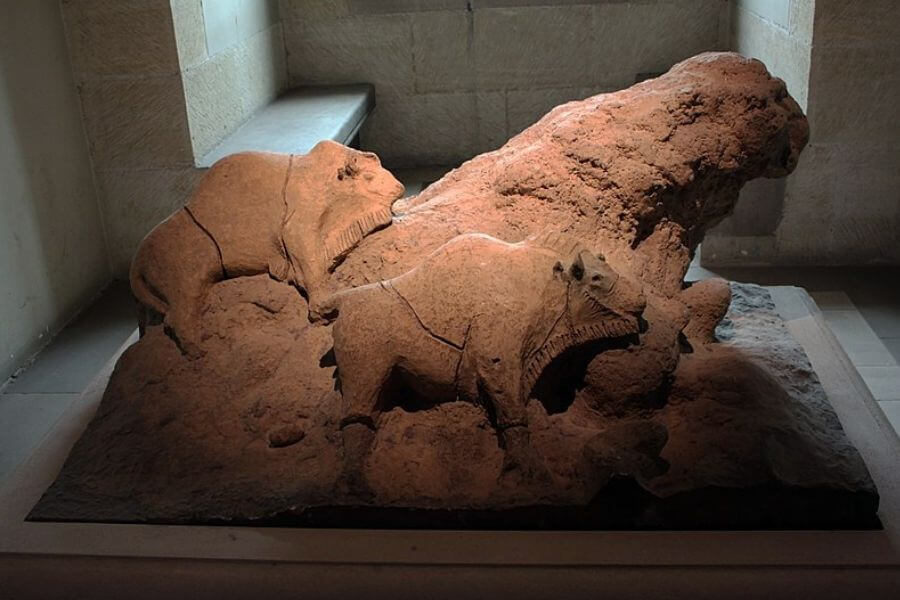
Le Tuc d’Audoubert cave houses 14,000-year-old bison sculptures, meticulously crafted from clay during the Magdalenian period.
Preserved by stable conditions, these lifelike creations reveal the artistic talents of prehistoric humans shaping their environment.
The detail, down to fur and muscle textures, shows humanity’s timeless drive to create beauty in even the simplest mediums.
Frozen Niagara Falls

Early 1900s photos capture Niagara Falls partially frozen, transforming the roaring cascade into a dramatic ice spectacle.
Though rare, these freeze-overs highlight nature’s power to reinvent itself, swapping water’s fluidity for frozen grandeur.
Tourists then and now marvel at this icy phenomenon, proving nature’s ability to surprise even the most jaded observer.
A Byzantine Bathtub

In Sbeitla, Tunisia, archaeologists uncovered a 1,500-year-old stone bathtub, offering a glimpse into luxurious Byzantine lifestyles.
Richly crafted and well-preserved, this discovery reflects the sophistication of even provincial Byzantine cities.
While dubbed a “bathtub,” debates rage over whether it’s a baptismal font—proving that even artifacts can spark a splash.
Bruce McCandless’ Spacewalk

In 1984, Bruce McCandless floated untethered in space using a Manned Maneuvering Unit, achieving a cosmic first in human exploration.
The photo of his solitary figure against the infinite void symbolizes humanity’s drive to conquer the unknown.
This daring feat combined cutting-edge technology with sheer bravery, inspiring generations to look to the stars.
The Tooth Worm Myth

Before modern dentistry, people blamed toothaches on “tooth worms,” imagined demonic creatures burrowing into teeth.
This folklore, enduring until the 18th century, reflects humanity’s attempts to explain the unexplainable before science stepped in.
It’s a grim reminder of how far we’ve come in understanding—and treating—the little monsters that plague our molars.
Spain’s Roman Coin Hoard

In 2016, workers in Tomares unearthed 50,000 Roman bronze coins in 19 amphorae, weighing over 1,300 pounds, making it Spain’s largest Roman coin find.
Buried strategically, this treasure hints at Roman wealth management, economic strategies, and fears of political instability in the late empire.
Despite its accidental discovery, this hoard is a historical jackpot, offering invaluable insights into ancient monetary systems.
Nature Reclaims Houtouwan

Houtouwan, a once-thriving fishing village in China, is now overrun with ivy and vegetation, creating a surreal green utopia.
Abandoned in the 1990s due to isolation, its buildings now blend seamlessly with nature, making it a hauntingly beautiful ghost town.
This village proves that when humans leave, nature doesn’t just bounce back—it takes over in spectacular style.
England’s Shell Mystery

The Shell Grotto in Kent, adorned with over 4.6 million shells, remains an unsolved historical enigma since its discovery in 1835.
The intricate mosaics covering its walls are rife with symbolism, yet no one knows who built it or for what purpose.
Was it an ancient temple, a medieval art project, or just someone’s quirky hobby? The mystery endures.
The Last Soldier in Guam

Shoichi Yokoi, a Japanese WWII soldier, hid in Guam’s jungle for 27 years, unaware the war had ended.
Discovered in 1972, he returned to Japan, embodying loyalty, resilience, and the psychological toll of conflict.
Yokoi’s story highlights how war reshapes lives long after the final shots are fired, with loyalty often outlasting logic.
Baiae: Rome’s Sinking Playground

The luxurious Roman resort of Baiae was a hotspot for emperors, scandal, and volcanic hot springs, earning a reputation as ancient Vegas.
Volcanic activity eventually sank the city beneath the Gulf of Naples, preserving its ruins for modern underwater exploration.
Baiae’s rise and fall showcase the fragility of even the grandest human achievements against nature’s forces.
Peru’s Maras Salt Mines

The Maras salt mines, with over 5,000 terraced pans, have been harvesting salt for over 2,000 years using ancient Incan techniques.
Filled with mineral-rich water from underground streams, these pans crystallize salt as the sun evaporates the water.
A living relic, Maras bridges past and present, showing how ancient practices remain essential and sustainable today.
Crete’s Minoan Road

Europe’s oldest road, built 3,500 years ago in Crete, showcases advanced engineering with drainage systems and durable sandstone blocks.
Stretching 50 kilometers, it connected ancient cities, demonstrating the Minoans’ ingenuity in infrastructure and transportation.
Still surviving today, this road is a testament to craftsmanship that puts modern potholes to shame.
Petra’s Rock-Cut Theater

Petra’s first-century AD theater, carved into sandstone, seated 3,000 people, blending Nabataean innovation with Roman design.
This venue hosted performances and gatherings, emphasizing Petra’s cultural and architectural sophistication during its golden era.
Carved from living rock, the theater reflects the Nabataeans’ resourcefulness in using their environment to create awe-inspiring spaces.
Pompeii’s Gladiator Helmet

Unearthed in 2009, a bronze gladiator helmet from Pompeii showcases the artistry of ancient Roman combat gear.
Adorned with engravings and crafted for murmillo fighters, the helmet highlights the blend of functionality and spectacle in gladiatorial games.
This find enriches our understanding of Roman culture, where even violence was staged with style and flair.
Croatia’s Grocery Palace

In Split, Croatia, a grocery store operates within the ancient walls of Diocletian’s Palace, merging modern life with Roman history.
Built in the fourth century AD, the palace’s UNESCO designation contrasts hilariously with aisles of snacks and household goods.
This curious fusion of past and present proves that even emperors couldn’t escape the grocery shopping grind.
China’s Stone Forest

The Shilin Stone Forest in Yunnan spans 180 square miles, with towering limestone pillars sculpted by nature over 270 million years.
Resembling mythical creatures, this geological wonder is steeped in local legends, including tragic love stories etched into stone.
Walking through Shilin feels like stepping into a fairy tale, blending natural beauty with cultural mystique.
Wyoming’s Devils Tower

Rising 1,267 feet, Devils Tower in Wyoming is a volcanic marvel and sacred Native American site, featuring dramatic vertical grooves.
Legend says giant bears clawed its sides, creating its unique columns while pursuing girls who were saved by the earth rising.
Both geologically and spiritually significant, Devils Tower is a towering symbol of nature’s power and cultural heritage.
Thutmose IV’s Chariot

A 3,400-year-old chariot from Thutmose IV’s tomb reveals ancient Egypt’s craftsmanship, designed for speed, ceremony, and status.
Made of lightweight wood and adorned with gold, it highlights the dual roles of war and spectacle in pharaonic power.
This rare find offers a glimpse into the engineering brilliance of the 18th Dynasty, preserved through millennia.
Namibia’s Hoba Meteorite

The Hoba meteorite, weighing 60 tons, is Earth’s largest iron chunk, discovered in Namibia with no visible impact crater.
Its mysterious origins and incredible size make it a celestial anomaly, inspiring wonder about its journey through space.
Hoba’s story is one of cosmic collisions and earthly discoveries, connecting our planet to the vastness of the universe.
Roman Crocodile Armor

Crafted from Nile crocodile hide, this 3rd-century AD Roman armor was more ceremonial than combative, showcasing exotic flair.
Adopted during Egyptian conquests, the armor highlighted Rome’s tendency to blend conquered cultures into its military symbolism.
While it didn’t make soldiers invincible, it certainly gave them a unique—and scaly—style on the battlefield.
Dunnottar Castle’s Secrets
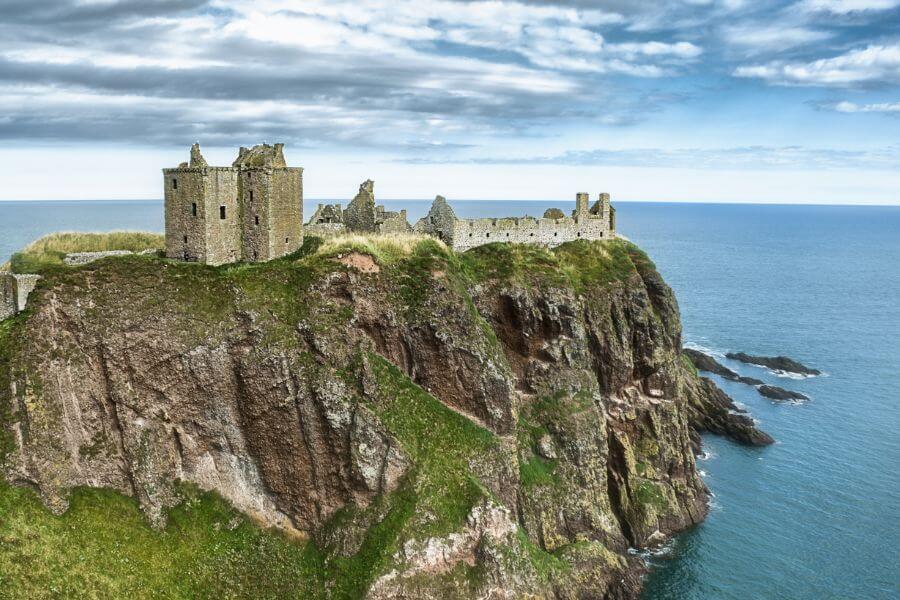
This Scottish stronghold housed the Crown Jewels during the English Civil War, hidden from Cromwell’s forces in the 17th century.
Its rugged headland location has seen sieges and royal intrigue, cementing its place in Scotland’s dramatic history.
Today, Dunnottar’s ruins are a testament to resilience, mystery, and the enduring appeal of medieval castles.
Iceland’s Remote Lighthouse
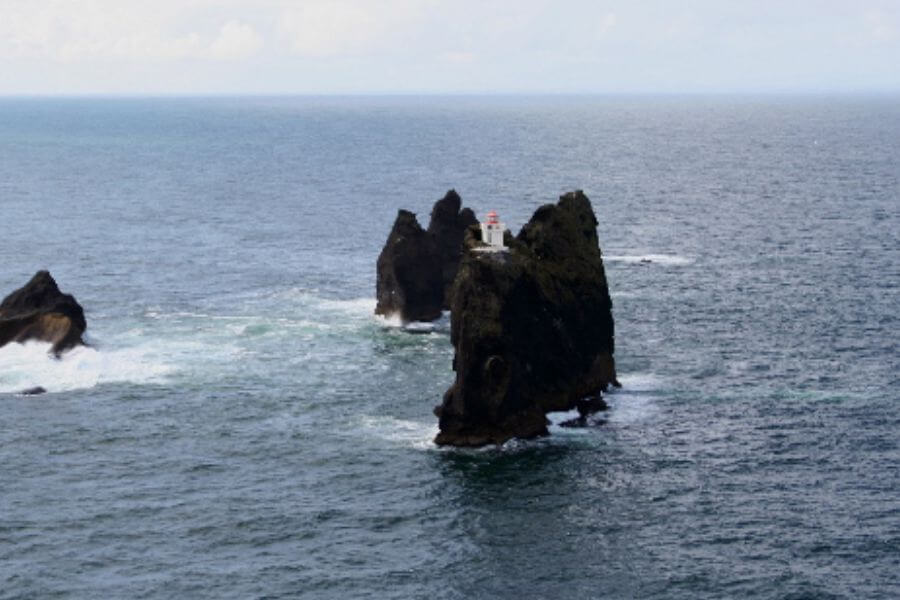
Þrídrangar Lighthouse, perched on jagged sea stacks, is one of the world’s most isolated, accessible only by helicopter or daring climbs.
Built in 1939, it’s a beacon of human determination, guiding sailors through the treacherous North Atlantic waters.
Its lonely, windswept location embodies the beauty of solitude and the courage it takes to thrive in extremes.
The Cat Sarcophagus

An X-ray of a sarcophagus from Saqqara revealed a mummified cat, blending ancient Egyptian reverence for felines with modern curiosity.
Cats symbolized protection and companionship, making them common offerings in Egyptian burial rituals.
This discovery highlights the cultural significance of cats, proving their VIP (Very Important Pet) status throughout history.
Denmark’s Viking Cemetery

Lindholm Høje’s 700 graves, preserved under sand for centuries, reveal Viking burial customs, from cremation to ship-shaped stone markers.
Artifacts unearthed here provide insight into daily life, trade, and beliefs, showcasing Vikings as more than just warriors.
Exploring Lindholm Høje feels like stepping into a saga where every stone tells a story of seafaring ancestors.
Ramesses II’s Colossal Statue

Once towering over Memphis, Egypt, this limestone statue of Ramesses II symbolizes the grandeur of his reign during the New Kingdom.
Despite lying horizontally now, its intricate craftsmanship and inscriptions continue to captivate visitors, connecting them to pharaonic majesty.
Transporting it to London in the 19th century failed, leaving it to rest in its homeland—a fitting tribute to Egypt’s enduring legacy.




